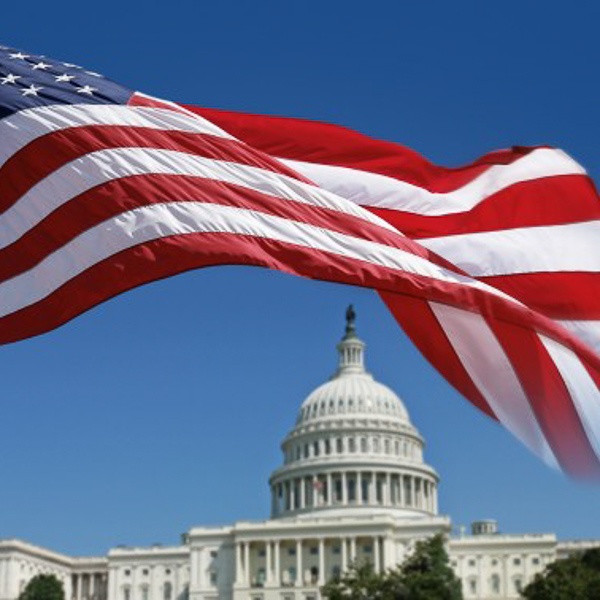Creating a stronger America with aquaculture
U.S. stands to lose out on nearly $100 billion and 50,000 jobs in global aquaculture growth over the next ten years
By SeaWestNews
More than 120 seafood industry leaders and other aquaculture proponents have signed on to a letter urging US lawmakers to open up opportunities for offshore fish farming.
United States Senate
Washington, D.C. 20510
Dear Senator:
We write to request your support for increasing U.S. production of healthful, sustainable and affordable seafood through marine aquaculture. Sens. Roger Wicker (R-MS) and Marco Rubio (R-FL), and Reps. Collin Peterson (D-MN) and Steve Palazzo (R-MS) intend to reintroduce an updated version of the “Advancing the Quality and Understanding of American Aquaculture Act” or the “AQUAA Act” this Congress.
The bill would clarify a process for permitting aquaculture in federal waters that preserves existing environmental safeguards and minimizes impacts to existing ocean-based industries.
The United States’ long coastline, expansive Exclusive Economic Zone (EEZ), superior technology, ample feed sources, and growing seafood market put it at the top of the list of countries with aquaculture potential.
Yet, the U.S. currently ranks only 16th in the world in aquaculture production.
The problem?
U.S. marine aquaculture is constrained by overlapping federal agency jurisdiction and the absence of a predictable, affordable and efficient permitting process. Until Congress acts, the U.S. stands to lose out on nearly $100 billion in global aquaculture growth over the next ten years and will continue to miss the environmental and health benefits made possible through marine aquaculture.
The economic benefits of marine aquaculture include job creation, investment in coastal communities, expanded markets for wild-caught seafood and new markets for American-farmed feed ingredients like soybeans.
Regarding jobs, a doubling of U.S. aquaculture production to about 1 million tons could create an additional 50,000 direct and indirect jobs, assuming 20 direct jobs per 1,000 tons of seafood produced, and five jobs per 1,000 tons in equipment, feeds, processing, marketing, and food service.
These jobs could provide stable, year-round employment opportunities in coastal and historic fishing communities where opportunities are often limited and seasonally dependent.
Seafood companies and fishermen are realizing that wild capture and aquaculture products can co-exist in the marketplace and that aquaculture products expand the market for wild fish.
In fact, nearly half of U.S. seafood consumption already comes from aquaculture, but the majority is produced overseas.
Seafood companies are marketing both wild and farmed seafood and investing in aquaculture ventures to ensure they have seafood to fulfill a growing demand.
With the AQUAA act, Congress can simplify the complex and uncertain regulatory process governing U.S. marine aquaculture and bring this investment, and economic advantages, back home to our rural, coastal communities.
Domestic marine aquaculture also presents an opportunity for American fishers diversify their businesses and create new opportunities at a time when traditional fishing has become increasingly uncertain.
Recreational anglers also benefit from marine aquaculture since net pens provide valuable habitat for native species thereby supporting increased localized productivity for recreational anglers to enjoy.
American farmers will also benefit from marine aquaculture which will provide new, stable domestic markets for their crops at this critical time when they are faced with increased uncertainty in export markets.
In fact, aquaculture is one of the fastest growing uses for U.S. soybeans. Essential research is underway to increase the utilization of plant-based feed in the diets of fish and shrimp.
Plant protein from crops like soybeans, corn and peas can replace fishmeal in aquaculture diets, reducing demand on wild stocks.
Examples of the environmental benefits of marine aquaculture include water conservation, lessened emissions and greater animal protein production using little space. Marine aquaculture requires no land, minimal fresh water and a relatively small amount of space to provide abundant, healthful seafood.
Since fish are cold blooded and grown in water where the effects of gravity are lessened, they can convert feed to edible protein much more efficiently than warm blooded animals produced on land.
Shellfish and seaweed culture does not require any feed inputs. Plus, farming in the ocean is three-dimensional, allowing much more animal protein to be produced in the same areal footprint
During the past 30 years, management practices and scientific innovation have reduced, eliminated, or minimized many of the environmental risks at responsibly managed farms. And, new coastal planning and siting tools are now available to assist managers, coastal planners and businesses in identifying suitable sites for marine aquaculture that avoid environmentally-sensitive habitats and reduce spatial conflicts with existing ocean uses like fishing, shipping and energy development.
Finally, the health benefits of seafood consumption, both farmed and wild, abound. Through marine aquaculture, the U.S. can increase sources of healthful and fully traceable seafood protein for American consumers.
Seafood sits among the highest-quality proteins (like eggs, meat, poultry and dairy) and offer additional health benefits, including omega-3 fatty acids which are critical to brain function and can improve heart health.
Leading health organizations recommend that Americans eat seafood at least twice a week.
In the wild, fish get their omega-3 fatty acids by consuming smaller fish. Farmed fish are similarly fed high protein pellets that, while increasingly formulated with plant protein, provide the same omega-3s.
With consideration of the AQUAA Act, Congress can make the economic, environmental and health benefits of marine aquaculture available to all Americans.
It is time for the U.S. to get into the aquaculture game and provide new local sources of sustainable seafood for consumers.
We can do it here, we can do it right and we can do it now.
Help us create a stronger America through seafood.
RELATED LINKS:
Turning the tide in Asia with aquaculture

